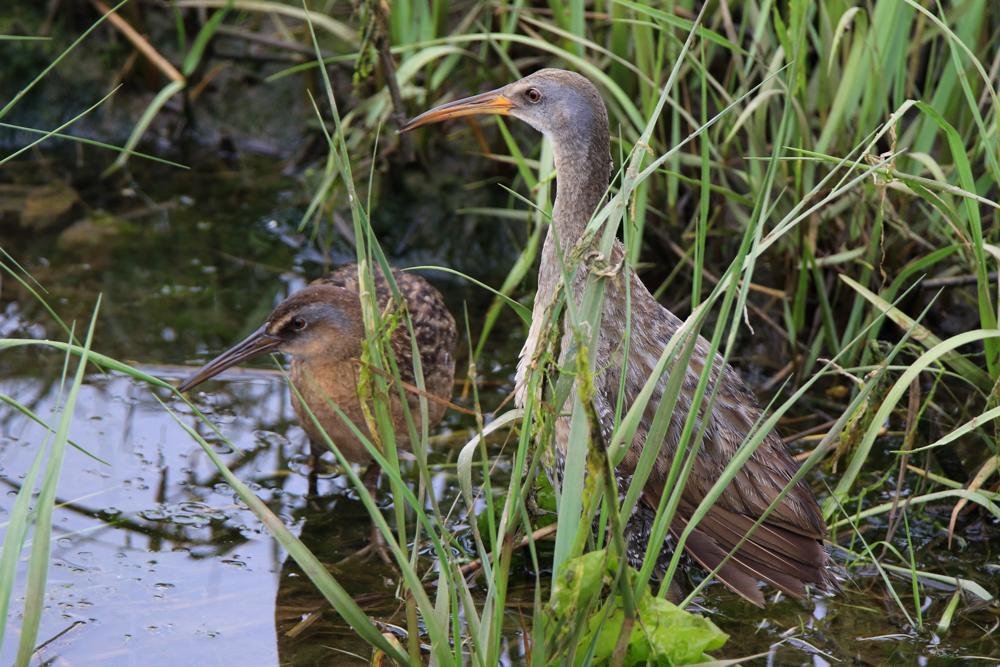For the past several years, there has been a King Rail in a nature preserve in Bayonne. Since it's the only one for dozens of miles around, it has a Clapper Rail for a mate. Here they are - the King is on the left, and the Clapper is on the right:

Here is the King Rail again - cleaning its wings:

The Clapper Rail is similar, but lighter in color. It lives exclusively in saltwater marshes.

King Rail normally lives in freshwater marshes. The marsh in Bayonne is brackish - tidal - which makes the appearance of this bird even more unusual.

Clapper Rail:

Close-up of the King Rail:

And now some more pictures from the spring migration:
Blue-gray Gnatcatcher on the nest:

Baltimore Oriole nest - it's always on the edge of a branch, so the squirrels can't get to it.

Bluejay nest in Central Park:

Here, you can even see one of their chicks popping up:

Pheasant in a central NJ state park:


Golden-winged Warbler:

Baltimore Oriole:

Ruby-throated Hummingbird:

Northern Flicker. There are flickers on both sides of US. The ones on the east coast are called yellow-shafted - to understand why, check the color of its under-tail. (The ones on the west coast are red-shafted.)

Chipmunkbird:

Painted turtle in Central Park:

And a bullfrog in Sterling Forest, NY:



















